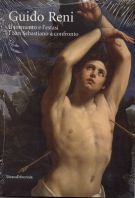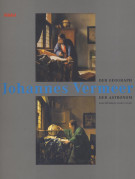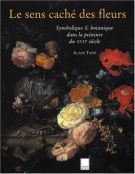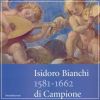Guido Reni Il tormento e l'estasi I San Sebastiano a confronto
| Autore/i | a cura di Piero Boccardo, Xavier F. Salomon | ||
| Editore | Silvana Editoriale | Luogo | Milano |
| Anno | 2007 | Pagine | 128 |
| Dimensioni | 17x24 (cm) | Illustrazioni | 50 ill. a colori n.t. - colours ills |
| Legatura | bross.ill colori con alette - paperback illustrated | Conservazione | Nuovo - New |
| Lingua | Italiano/Inglese - Italian/English Text | Peso | 600 (gr) |
| ISBN | 8836609708 | EAN-13 | 9788836609703 |
esaurito presso l'editore
Genova, Musei di Strada Nuova, 6 ottobre 2007 - 20 gennaio 2008.
Il volume accompagna una mostra, ospitata prima a Genova e quindi a Londra, che pone per la prima volta a confronto diretto le sette e uniche versioni del San Sebastiano di Guido Reni (Bologna, 1575–1642).
Reni, uno dei più grandi interpreti del Seicento, ha fornito del martirio di san Sebastiano – il cui culto aveva avuto una straordinaria diffusione in virtù della protezione attribuitagli durante le epidemie di peste – immagini del tutto indipendenti dalle suggestioni medievali, dal carattere più edonistico che religioso, se è vero che Stendhal ricorda come alcuni di questi quadri furono tolti dalle chiese di Roma perché innamoravano le bigotte.
Nel XIX secolo Oscar Wilde, ammirando il San Sebastiano di Reni a Genova, ne decretò una nuova fortuna che, passando per la letteratura (D’Annunzio, Mishima), il cinema (Jarman, Defurne) e altre forme di comunicazione visiva come la fotografia e la danza, continua fino a oggi.
Un’immagine ancora attuale, quindi, che affonda le sue radici proprio nei prototipi reniani, intorno alle quali la critica si è a più riprese interrogata e su cui la mostra si propone di fare nuova luce.
Il catalogo, che propone dettagliate schede dei sette dipinti considerati (compreso quello del Louvre, non in mostra per ragioni conservative), ospita saggi sulla fortuna iconografica di San Sebastiano (Karim Ressouni-Demigneux), sull’evoluzione dell’arte di Reni negli anni dieci del Seicento (Andrea Emiliani), sul ruolo di San Sebastiano nell’opera del pittore bolognese e sulla questione dell’“originale” e della bottega (Richard Spear), e sui diretti rapporti di Reni con la committenza genovese (Piero Boccardo).
London, February - May 2008.
For a long time questions surrounding the many versions of paintings by Guido Reni have been the centre of a scholarly debate which still continues. Two paintings of Saint Sebastian, one at Dulwich Picture Gallery and the other at Palazzo Rosso in Genoa, showing different compositions but ascribable to the same period in Reni’s career, are particularly important in terms of this issue as, besides the many copies after them, there are other versions reproducing one or the other’s composition, the authorship of which has long been under discussion. Are these ‘originals’, ‘copies’, or workshop pieces created under Reni’s supervision? The Saint Sebastians on display in this exhibition – the paintings at Dulwich and Genoa will appear alongside another four examples of the subject from the Pinacoteca Capitolina in Rome, the Museo del Prado in Madrid, the Museo de Arte de Ponce (Puerto Rico), and the Auckland Art Gallery (New Zealand) – should be seen, instead, under a different light. The authors of this catalogue present here the scholarly views that have produced strikingly diverse conclusions, providing details about the provenance of the works, their condition, and the results of technical analysis to further help the direct comparison offered by this exhibition. Besides the historical and critical circumstances, other cultural aspects that relate to these works have been addressed. It is impossible not to discuss the fame of such beautiful images, especially considering how the iconography of the saint has developed in time. The catalogue entries on Guido Reni’s Saint Sebastians are introduced by essays that explore the historical fortune and the iconography of the martyr (Karim Ressouni-Demigneux), as well as the importance of Saint Sebastian in the artist’s oeuvre, the issues concerning ‘original’ and studio works (Richard Spear), the Bolognese painter’s artistic evolution in the second decade of the seventeenth century (Andrea Emiliani), and the direct relationship between Reni and Genoese patrons (Piero Boccardo). (T-CA)
Potrebbero interessarti anche...










